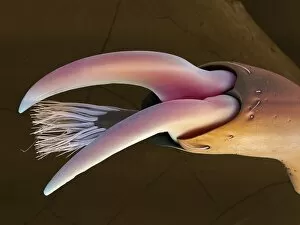Dynastes Hercules Collection
The Dynastes hercules, also known as the Hercules beetle, is a magnificent creature that commands attention with its sheer size and striking appearance
All Professionally Made to Order for Quick Shipping
The Dynastes hercules, also known as the Hercules beetle, is a magnificent creature that commands attention with its sheer size and striking appearance. This incredible insect can be found in various parts of America and has been captivating scientists and nature enthusiasts for centuries. Often referred to by different names such as The Bronze Beetle, The Hoary Beetle, or even The Bronze Buprestus, this species has left an indelible mark on the world of entomology. Its presence was first documented in 1810-17 through watercolor illustrations and manuscript texts that described an unidentified blue beetle. One cannot help but marvel at the male Dynastes hercules' impressive horn, which serves both as a symbol of strength and a weapon during battles for territory or mates, and is truly a sight to behold when compared side by side with another giant among beetles - Titanus giganteus. Illustrations from 1823 depict these majestic creatures in all their glory; one particular image showcases the male Hercules beetle displaying its dominance while another highlights the grandeur of both Titan and Hercules beetles together. Even under close examination using scanning electron microscopy (SEM), the intricacies of this species become apparent. From detailed images capturing every minute detail of its antenna to zoomed-in shots revealing the intricate structure of a female's head – it becomes clear why these insects have captivated researchers for generations. Whether you refer to it as Dynastes hercules or simply call it the Hercules beetle, there is no denying that this creature holds immense fascination within its wingspan. Its presence throughout history continues to inspire awe and wonder among those fortunate enough to witness its magnificence firsthand.













